2024 Mercedes-AMG GT 63 First Drive: If at first you don’t succeed…
The 2015 Mercedes-AMG GT was the three-pointed star’s first attempts to take on the Porsche 911. It was, strategically, an anti-911: a fast and loud sports car whose layout and execution echoed that of the legendary 300 SL and the intimidating SLS AMG. It was a snug two-seater with bodywork shrink-wrapped around a rumbling, front-mounted twin-turbo V-8 that drove the rear wheels via dual-clutch transaxle transmission. Ultimately, the 911 hegemony proved more impregnable than the folks at AMG headquarters in Affalterbach imagined: Global sales of the GT through to the end of 2021 totaled less than half the number of 911s that Porsche sold just in the U.S. over the same period.
The 2024 Mercedes-AMG GT is another shot across 911’s bow, albeit this time taking a slightly different tack. The decision was made to base the new GT on the same AMG-developed platform as the recently launched SL roadster, which makes economic sense. That approach also dictated a longer wheelbase, ditching the transaxle dual-clutch transmission, and a weight increase of nearly 600 pounds.

On paper, the new GT thus seems less of a sports car than the original. On the road, though, and particularly in the context of Porsche’s all-wheel-drive Carrera 4 S and Turbo models, it’s an even more credible 911 rival than its predecessor. Why? Like those 911s, the 2024 Mercedes-AMG GT—far less raw and rambunctious than before—is just as at home noodling down to Sunday brunch at the Beverly Hills Hotel as it is attacking the Nürburgring Nordschleife. It is a 24/7, very-high-performance sports car you can drive all day, every day.

The new AMG GT is 7.1 inches longer and 1.6 inches wider than the outgoing car, with a 2.8-inch longer wheelbase that allows the addition of optional rear seats—a feature that has long made the 911 unique among dedicated sports cars. The longer wheelbase and longer cabin have changed the proportions compared with the first-generation GT, the roofline sweeping more elegantly towards the tail. Up front, the toothy AMG grille hides additional cooling and aero vents at the lower sides and underneath.
As with the SL, the GT packs AMG’s versatile 4.0-liter, twin-turbo V-8 under its long hood. The engine is available in two states of tune: The 469 hp and 516 lb-ft version powers the entry-level GT 55, while the 577 hp and 590 lb-ft variant powers the top-of-the-line—for now—GT 63. The engine is held by active engine mounts and drives all four wheels through AMG’s nine-speed Speedshift multi-clutch transmission (a wet star-off clutch replaces the traditional torque converter) and its performance-tuned 4Matic+ all-wheel drive system.
The GT debuts AMG’s new semi-active suspension, which uses cross-linked shocks to control roll, eliminating the need for anti-roll bars. Rear-wheel steering is standard, as is an electronically controlled limited-slip rear differential. The standard brake setup utilizes steel rotors, but AMG’s high-performance carbon-ceramic brake package is available as an option. The carbon-ceramic brakes are not only lighter, but the front rotors are bigger, measuring 16.5 inches, compared with the 15.4-inch steel items.

Specs: 2024 Mercedes-AMG GT
Price: TBA
Powertrain: 4.0-liter twin-turbocharged V-8; nine-speed multi-clutch automatic transmission
Horsepower: 469 hp @ 5500-6500 rpm (GT 55); 577 hp @ 5500-6500 rpm (GT 63)
Torque: 516 lb-ft @ 2250–4500 rpm (GT 55); 590 lb-ft @ 2250–4500 rpm (GT 63)
Layout: All-wheel-drive, two-door, two or four-passenger coupe
Weight: TBA
EPA-rated fuel economy: TBA
0–60 mph: 3.8 seconds 183 mph (GT 55); 3.1 seconds (GT 63)
Top speed (elec. limited): 183 mph (GT 55); 196 mph (GT 63)
Competitors: Porsche 911 Carrera 4S, Porsche 911 Turbo
Other standard goodies include 20-inch aluminum wheels, AMG’s Track Pace performance monitoring app, digital LED headlights, and active aero, which includes an air flow control system and active splitter up front, and an active rear spoiler that deploys at speed. The interior, much more upscale looking than that of the outgoing GT, features a 12.3-inch LCD instrument display, electrically adjustable AMG sports seats, the AMG performance steering wheel with drive mode control buttons, and a large central touchscreen controlling the latest version of the MBUX interface.
Options include the folding rear seats, an aero pack that features a fixed rear wing, and Carbon and Night appearance packages like those seen elsewhere across the Mercedes-AMG lineup. In GTs with no rear seat, the bulkhead between the load space and the cabin is fixed. The enhanced cargo flexibility offered by the folding rear seats—with the seats folded flat AMG claims the GT will carry three golf bags or even a bicycle—is the reason the take rate on the rear seat option is expected to be very high.
Pricing won’t be announced until the car arrives at U.S. Mercedes dealers in the first half of next year, but as convertibles traditionally command higher prices than coupes, our guess both the GT 55 and GT 63 will sticker for less than their SL counterparts. That would put the GT 55 right on the $140,250 Carrera 4S, which packs 26 fewer horses and has 126 lb-ft less torque, while the GT 63 could cost almost $20,000 less than the $199,850 Turbo, whose 3.8-liter flat-six produces near-identical power but 37 lb-ft less torque.

Both all-wheel-drive 911s are quicker to 60 mph, the Carrera 4S taking 3.4 seconds for the sprint versus the GT 55’s 3.8 seconds, and the Turbo 2.7 seconds versus the GT 63’s 3.1 seconds, according to figures from both automakers. That’s mostly the mass talking: The GT weighs 19 percent more than the Turbo and 24 percent more than the Carrera 4S, not the least because it’s a much bigger car with a wheelbase almost 10 inches longer than that of the 911. And yet AMG’s latest sports car does a remarkable job of disguising its size and weight.
True, there’s a typically Mercedes heft to the way the AMG GT drives; on the fast and demanding roads of southern Spain, our GT 63 tester felt nowhere near as light on its feet as a 911 Turbo. Yet the standard rear-wheel steering system, which can turn the rear wheels as much as 2.5 degrees in the opposite direction to the fronts at speeds up to 60 mph, combined with the e-diff and the sophisticated stability control system, which can apply rapid brake interventions on individual wheels to control yaw motions, endows the GT with impressive agility.

Cleverly, the level of agility the GT displays doesn’t directly depend on the drive mode you’ve selected. As per usual AMG practice, there are six drive modes available—Slippery, Comfort, Sport, Sport+, Race, and Individual—the first five of which offer ascending levels of engine and transmission response, suspension stiffness, and steering effort, with Individual mode enabling drivers to mix and match certain settings. Within those modes, though, you can further adjust the way the GT’s chassis responds to your inputs.
In simple terms, using a menu dubbed AMG Dynamics, the yaw control parameters assigned to Comfort mode can be used in Race mode, and vice versa. The default setting in Comfort mode is called Basic and endows the car with high yaw damping and very stable handing. Selecting Sport mode activates the Advanced setting, which supports more aggressive turn in response, while Sport+ mode shifts the parameters towards an even more dynamic setup. But each one of these can be activated in all three drive modes, as well as in the most aggressive Race drive mode, via a menu on the central touchscreen.

Race mode allows drivers to access Master level in the AMG Dynamics system, but only with the ESP switched to ESP Sport, or switched off. AMG says Master mode is aimed at drivers who want track-day thrills; it offers a vehicle balance with slight oversteer, a low steering angle aided by the rear wheels, and a sharper steering response. Though prudence prevented us from fully exploring the nuances of the AMG Dynamics system on public roads, the differences in the way the GT responds to steering and throttle inputs in the different levels were noticeable.
A key weapon in the GT’s dynamic arsenal are the cross-linked adaptive shocks, which use oil pumped between the units on either side of the front and rear axles to control roll and body motions. The compression stages of the shocks on the left-hand side of the car are connected to the rebound stages of the shocks on the right of the car via a hydraulic line and two-way valves, and vice versa. Both circuits are additionally connected to a central pump. Hydraulic pressure is used to counter roll motions, ensuring the car stays flat through corners.

The system not only does away with the need for mechanical anti-roll bars but also allows for independently variable roll rates at the front and rear axles. The precise control of the damping also endows the GT with an impressively refined ride, especially in Comfort mode, as the car can run softer spring rates than the previous GT. Suspension noise and impact harshness is very well suppressed: On all roads, at all speeds, the Mercedes is noticeably quieter and feels more refined than any Porsche 911.
And that’s the genius of the Mercedes-AMG GT, especially the GT 63. It is thrilling in the twisty bits, the rear-wheel steering and yaw control systems enabling it to dive hungrily into a corner, the roll control system helping maximize mid-corner grip, and the epic grunt of that twin-turbo V-8 funneling though the all-wheel drive system, punching it hard past the apex. (That 4Matic+ setup never sends more than 50 percent of the available to the front wheels.) Yet the GT is also a comfortable and refined grand tourer, a car capable of crossing continents or idling along crowded city streets with minimal effort.
In terms of its execution and the way it drives, the 2024 AMG GT is a more mature and accomplished all-rounder than its predecessor. Although it lacks some of the original car’s bite, this follow-up is more so a proper Mercedes. Whether that amounts to a more compelling Porsche 911 alternative on the sales charts, we shall see.
2024 Mercedes-AMG GT
Highs: Easy to drive fast, composed ride, roomy interior for a sports car.
Lows: Heavy, infotainment menus can be confusing, some drivers might miss the rawness of the prior car.
Takeaway: The second-generation AMG GT is more of a 911 imitator, yet also a more convincing Mercedes than its predecessor.
***
Check out the Hagerty Media homepage so you don’t miss a single story, or better yet, bookmark it. To get our best stories delivered right to your inbox, subscribe to our newsletters.
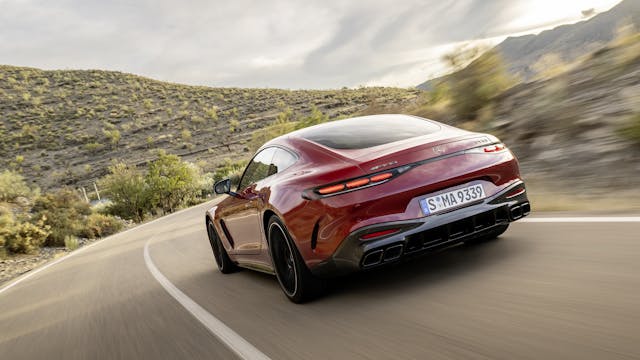
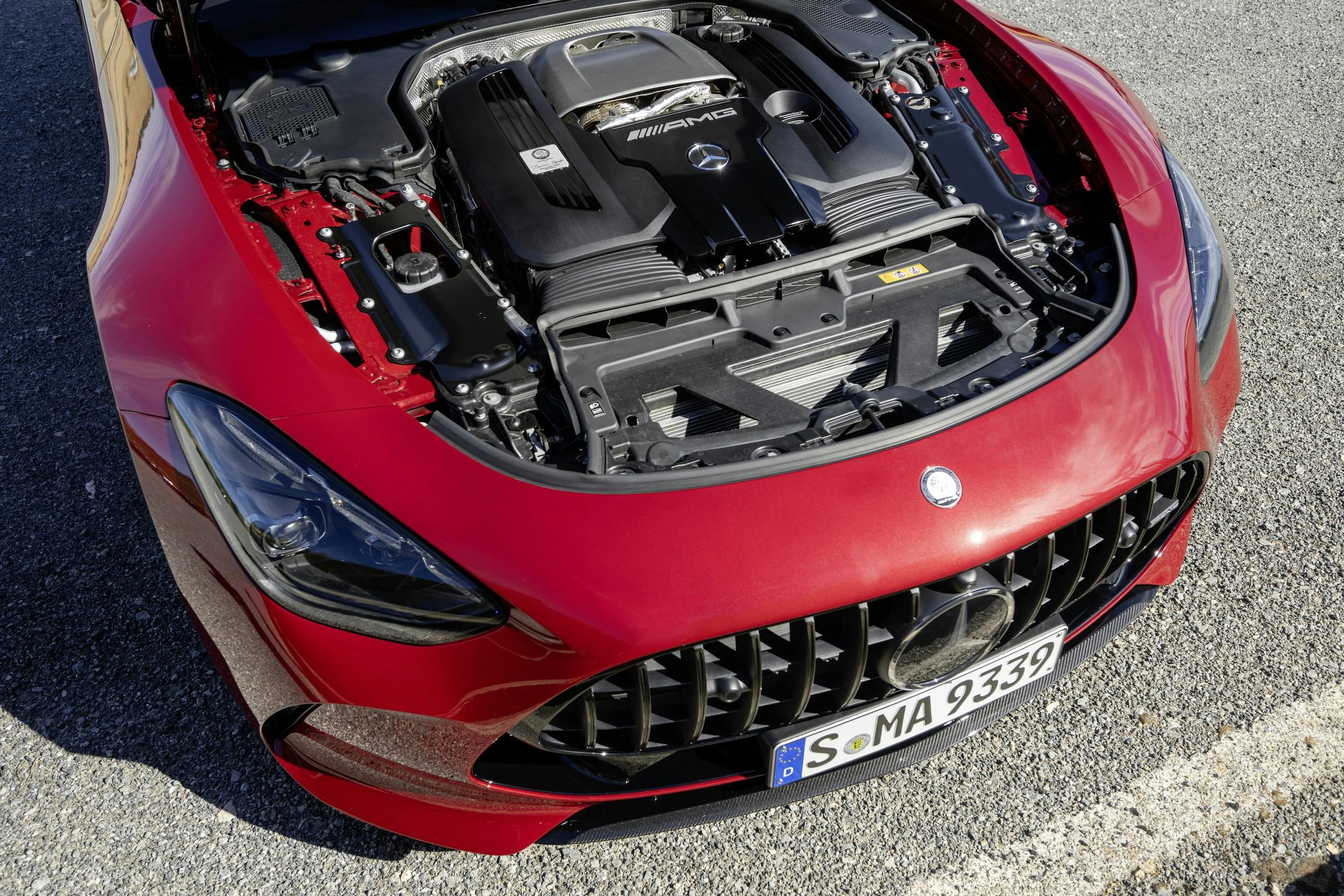
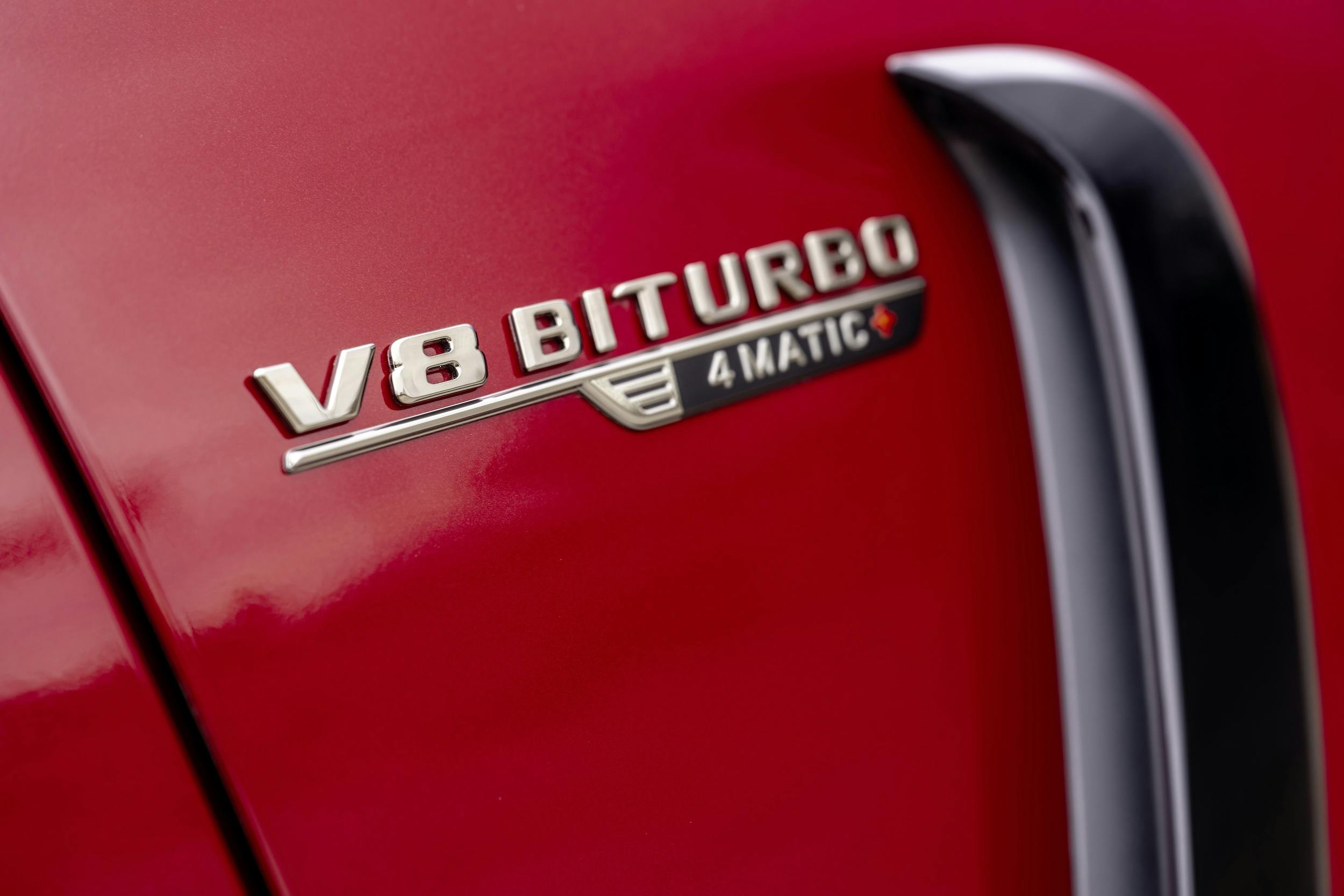
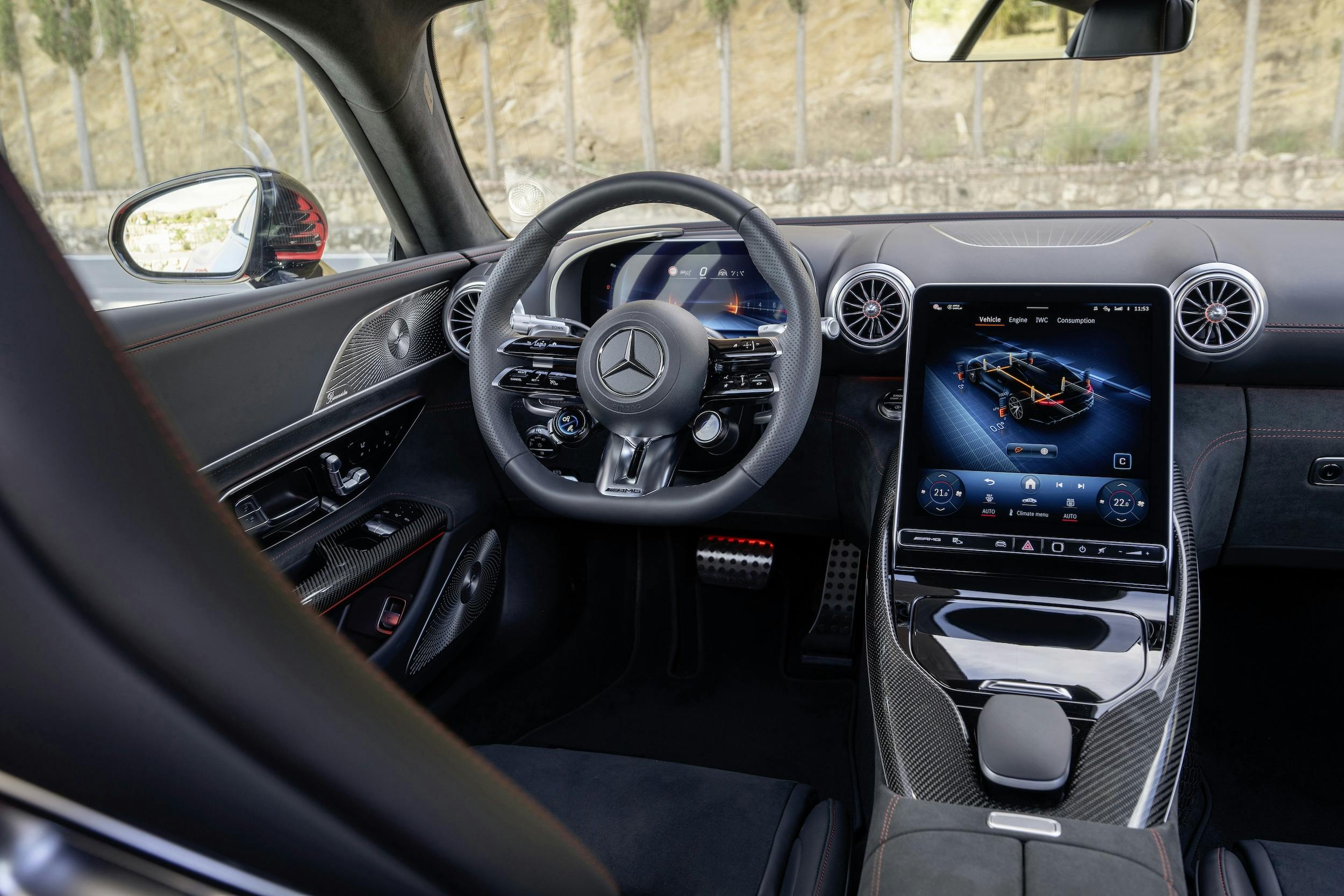
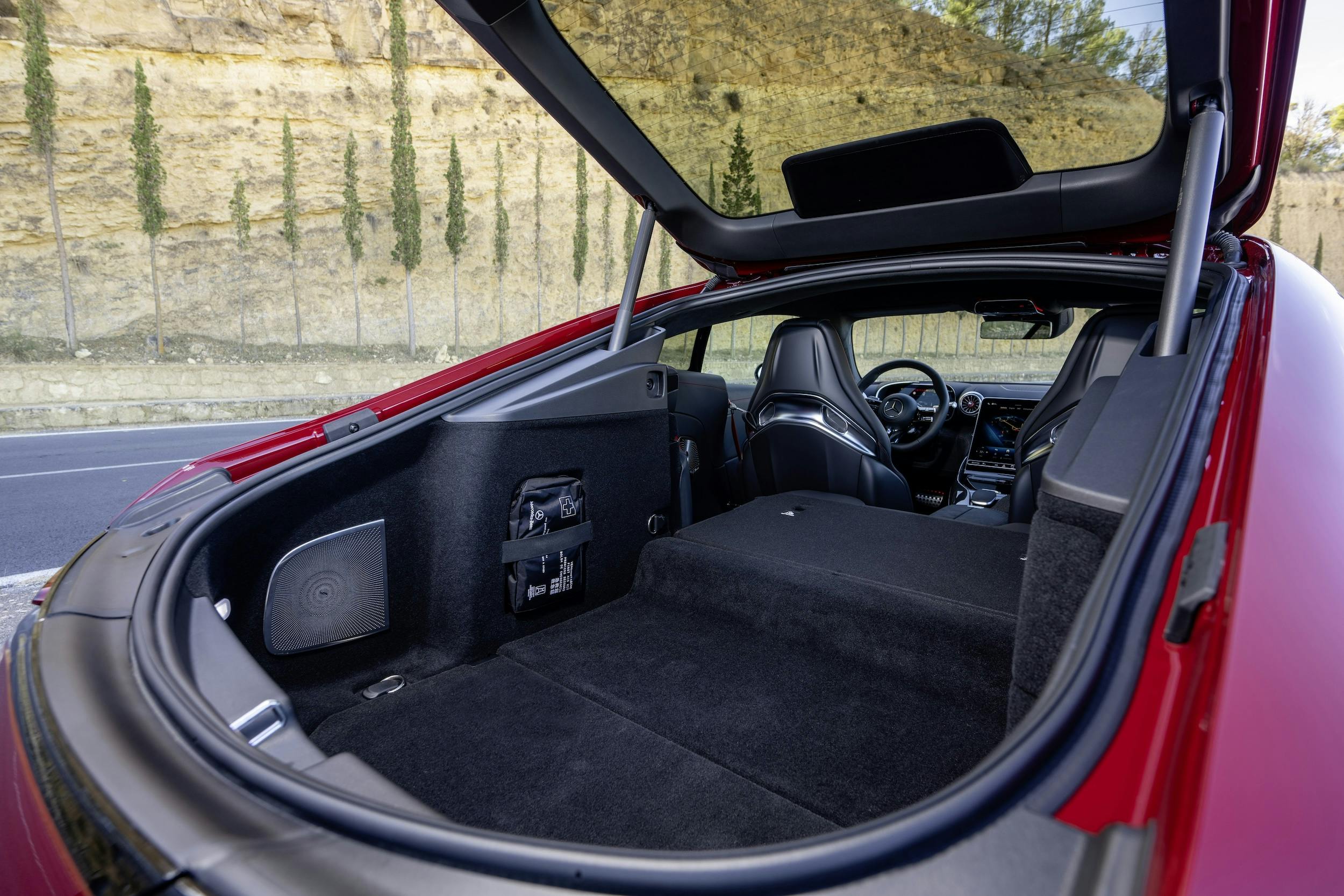
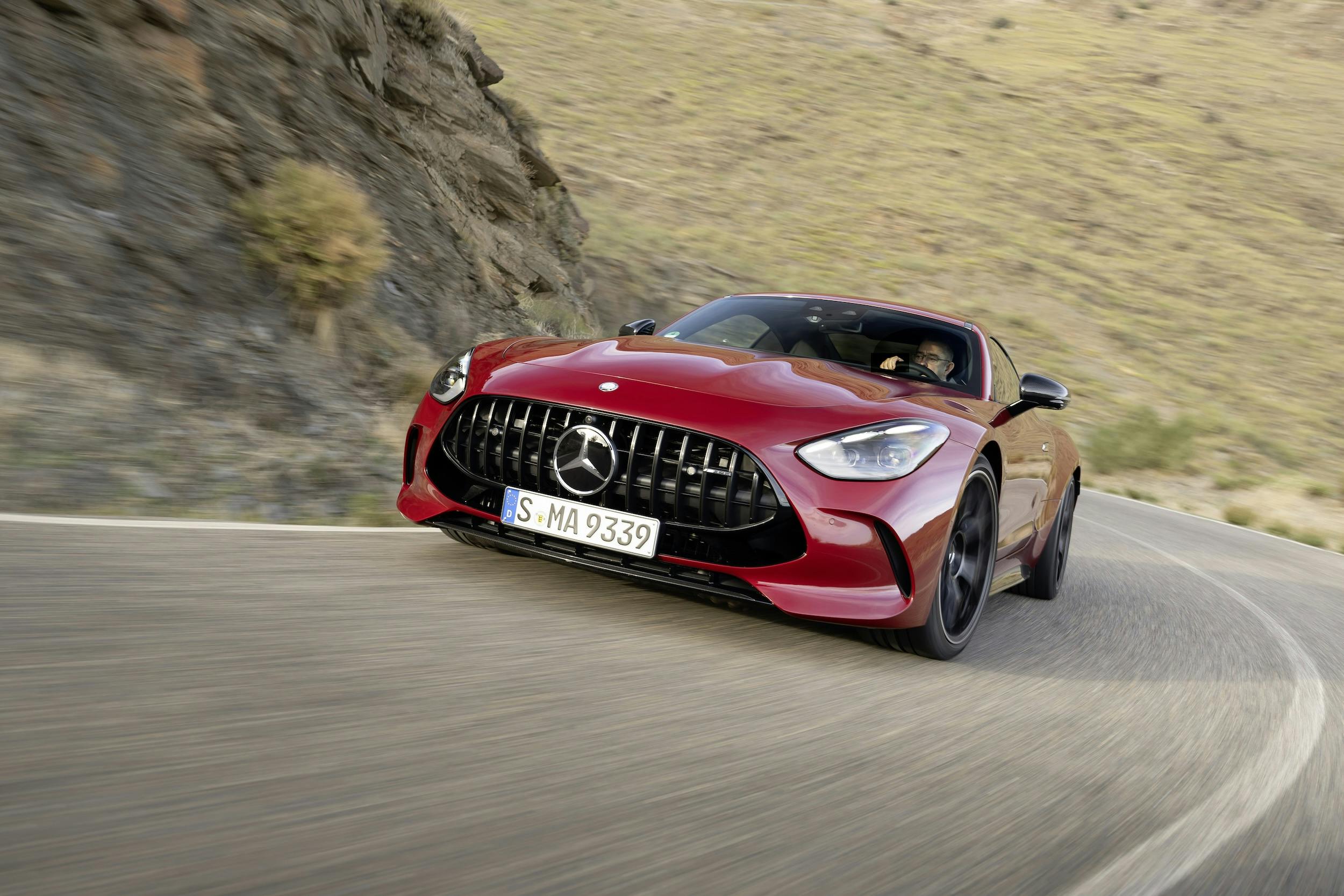
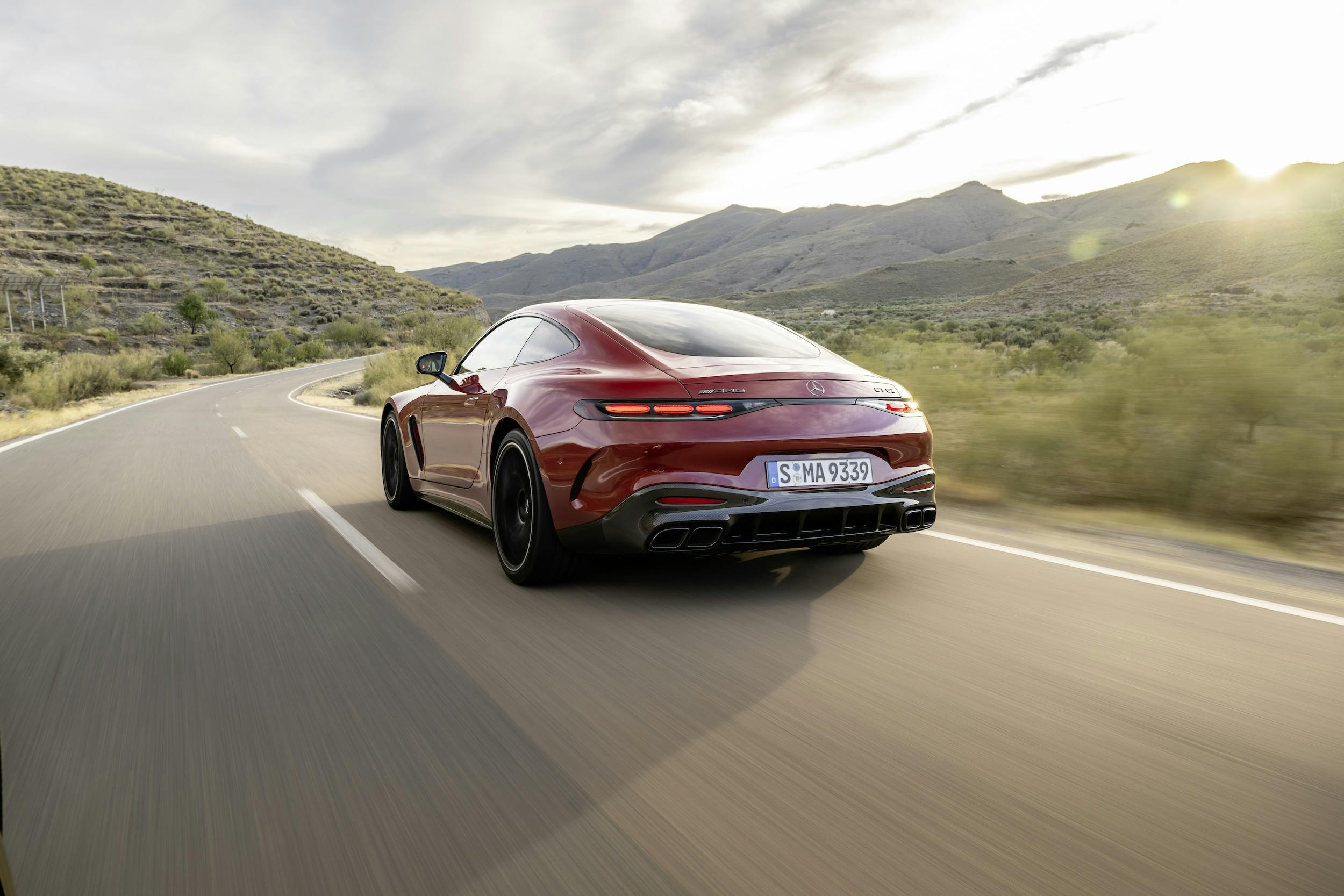
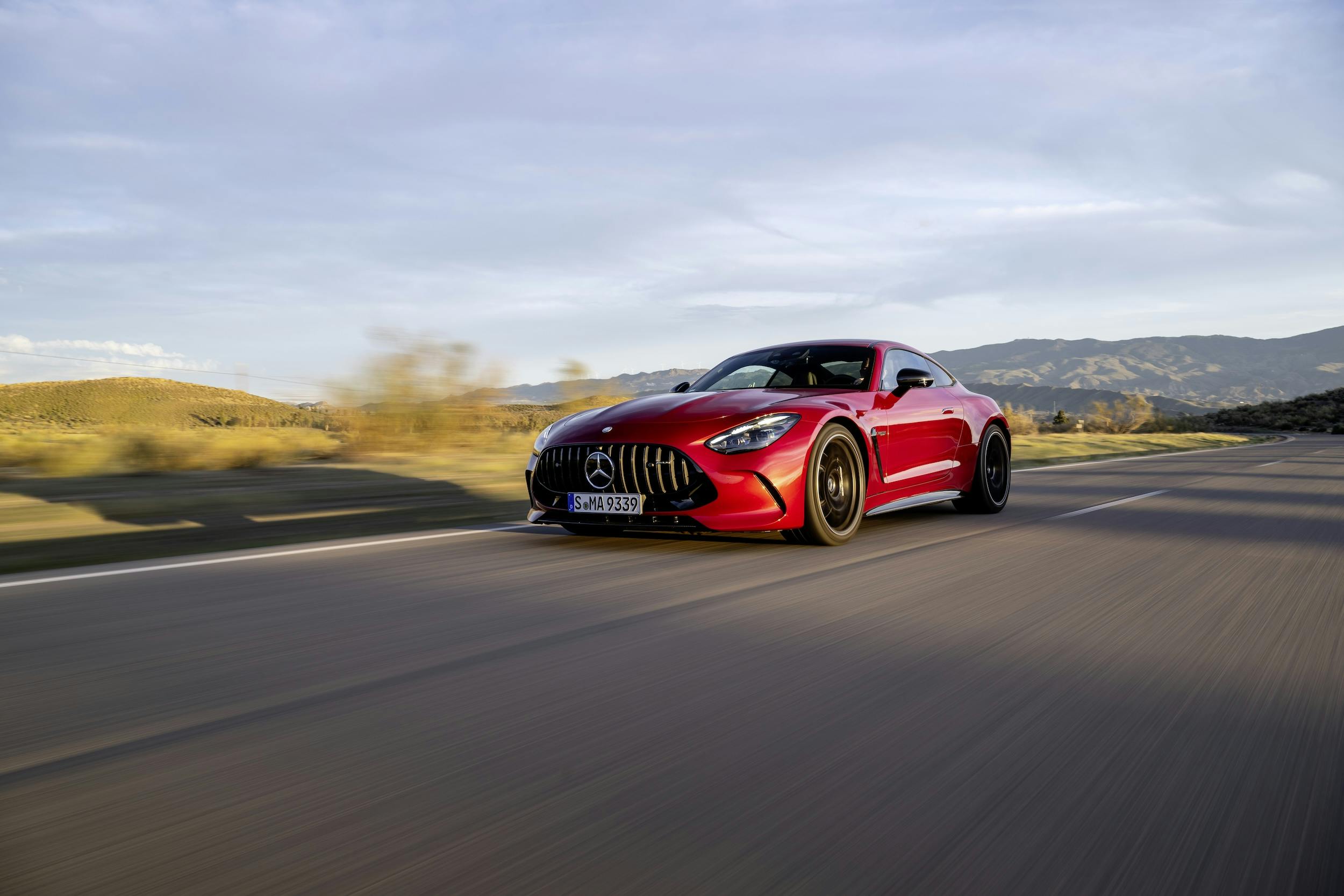
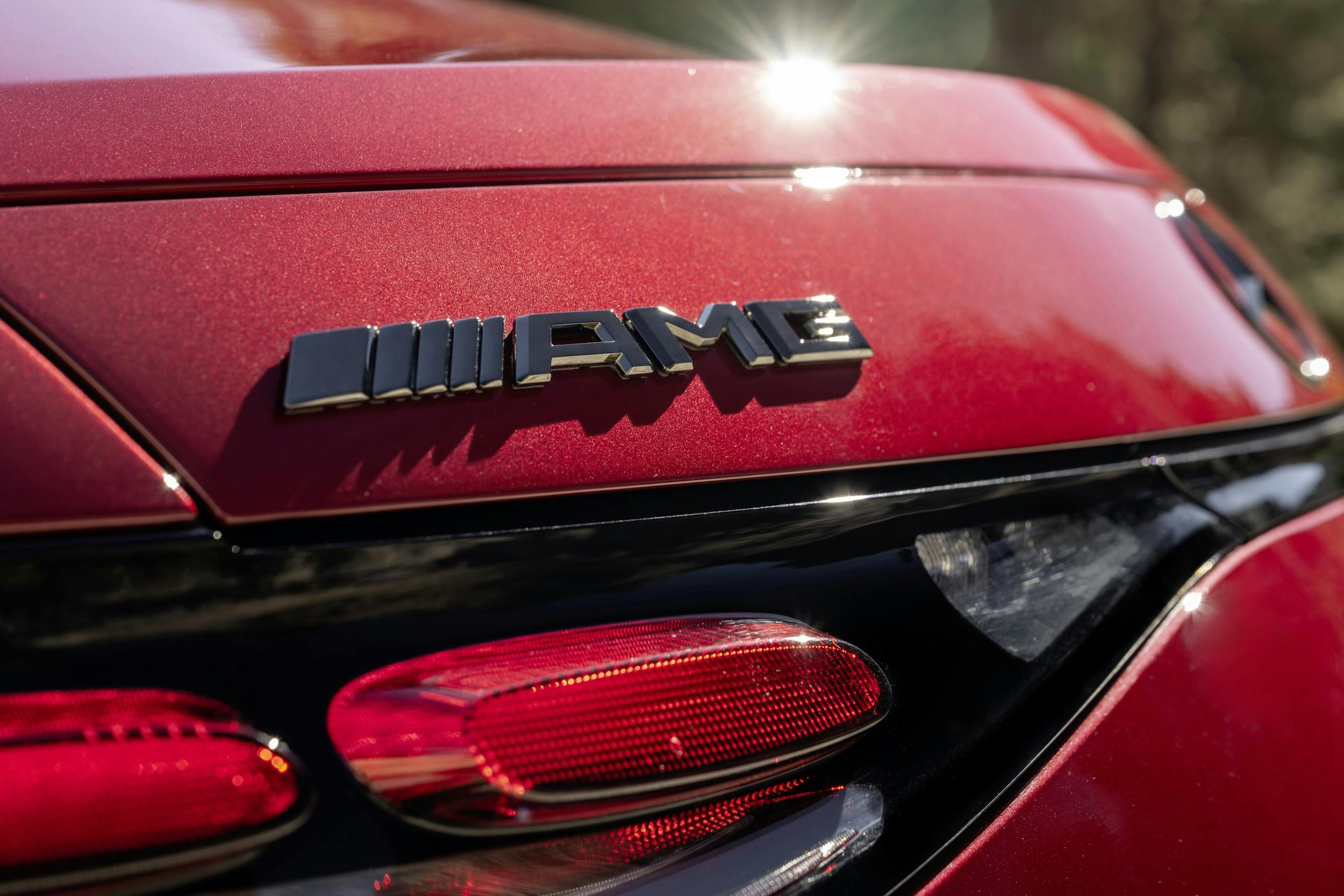
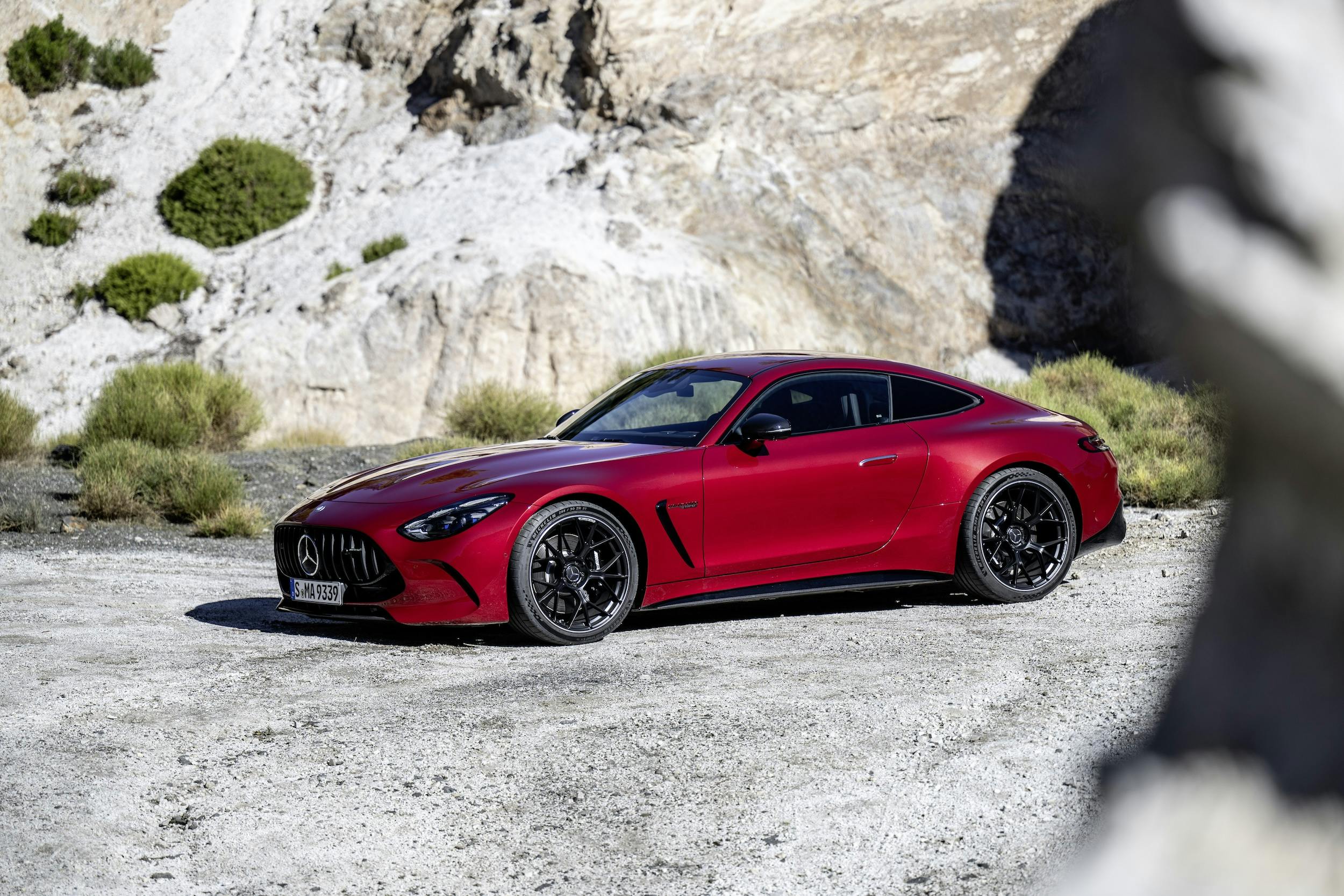
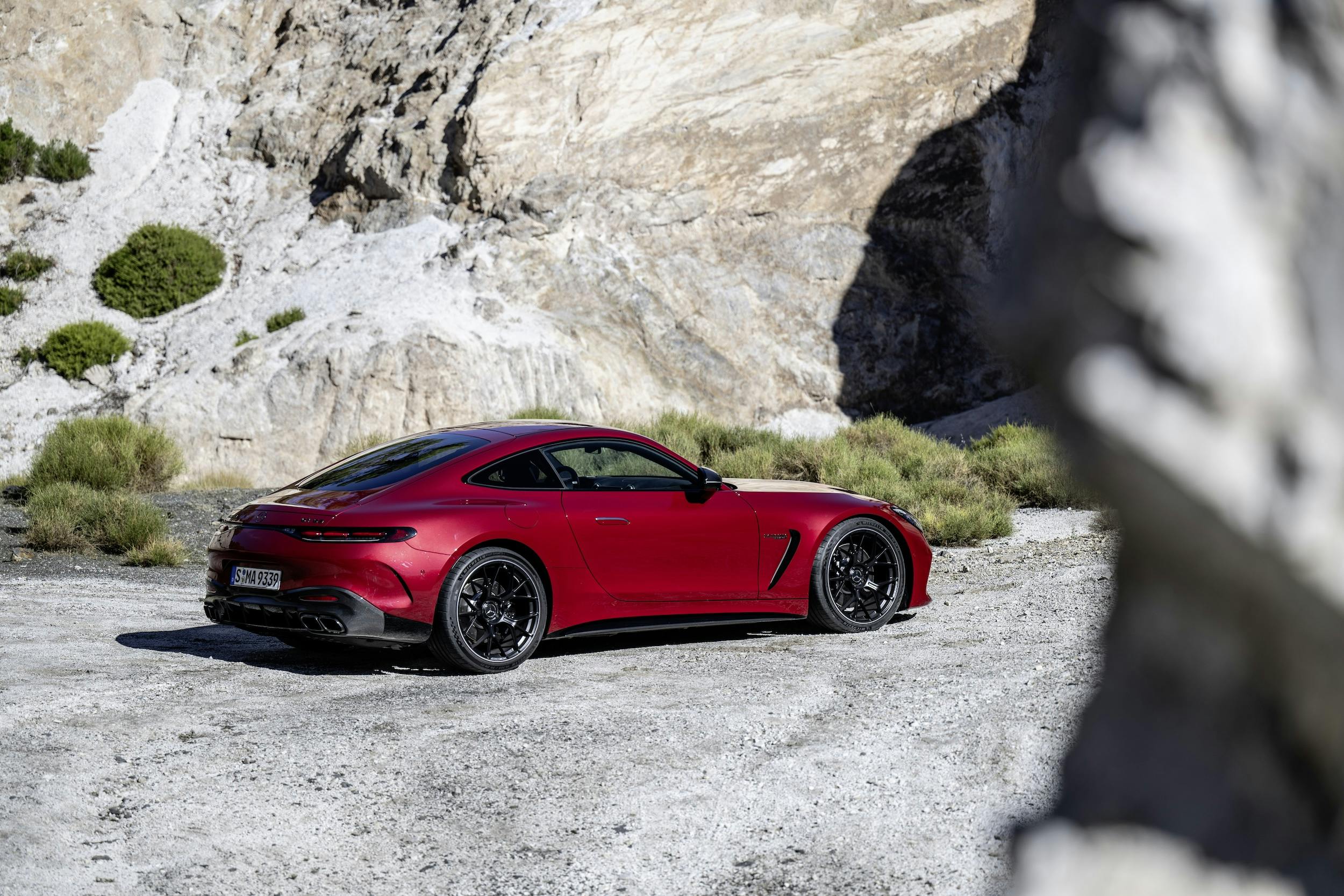





Switching to the SL platform cost it 600 pounds. Between that and the touchscreen interior, what a horrible downgrade.